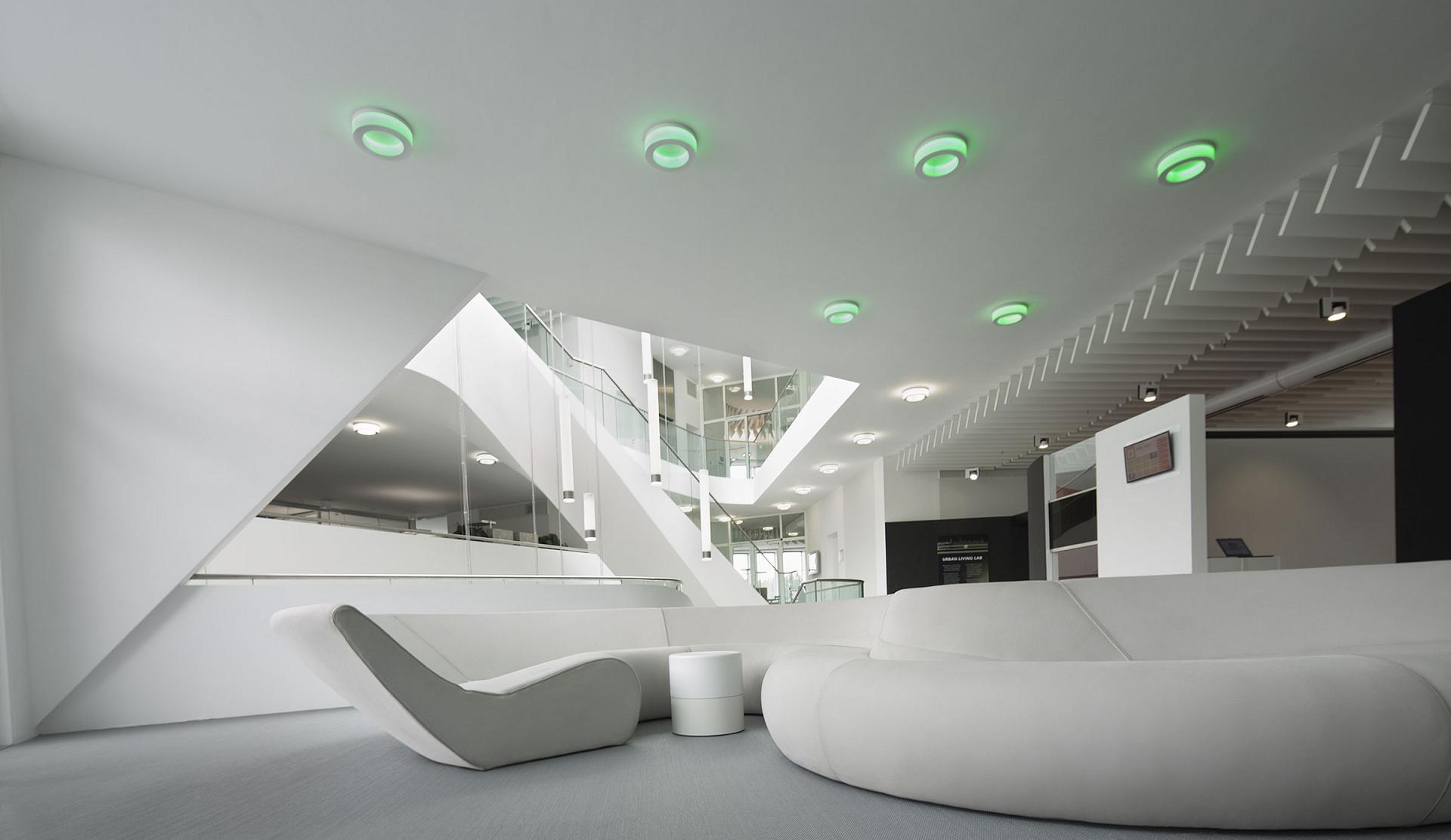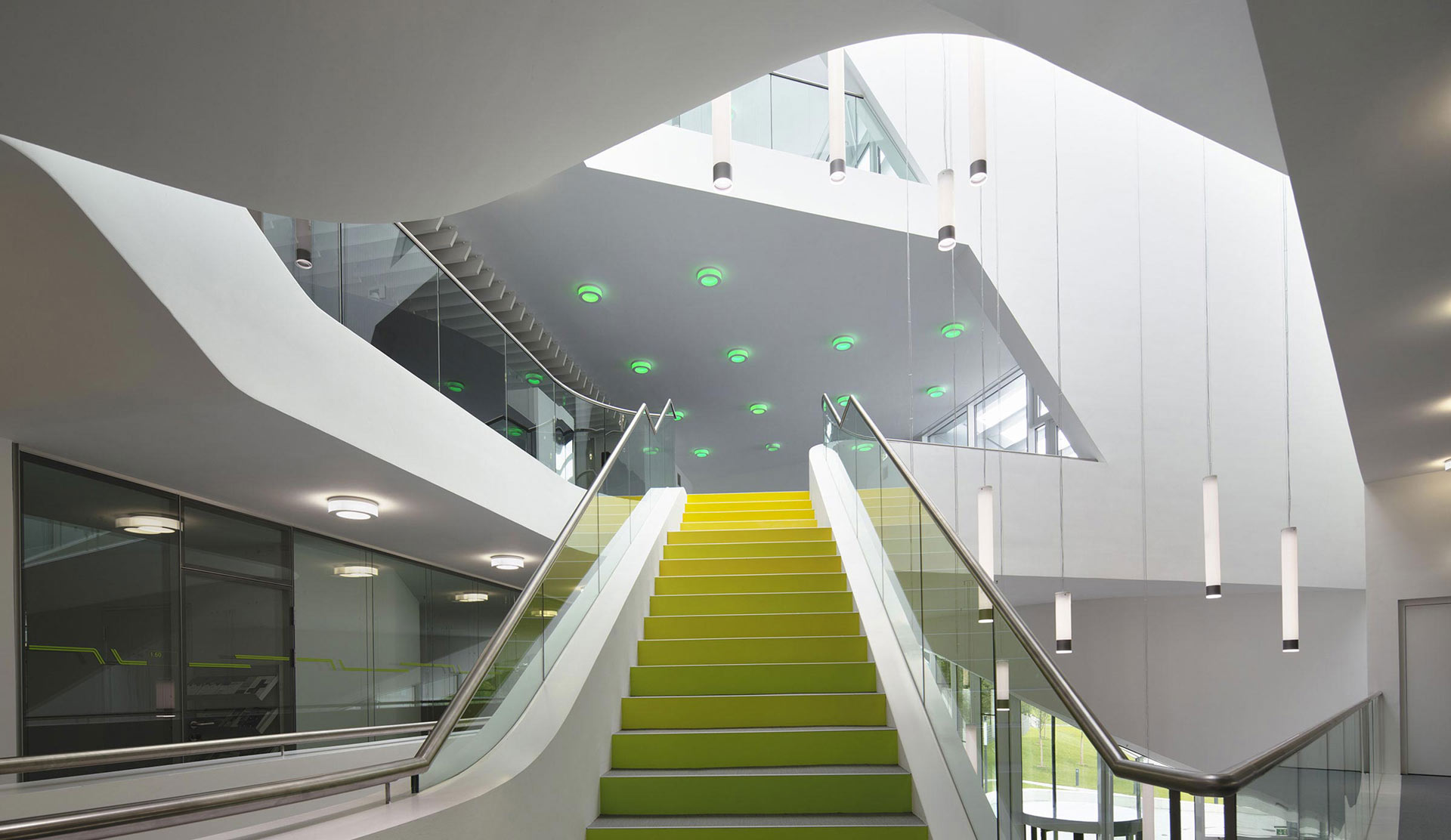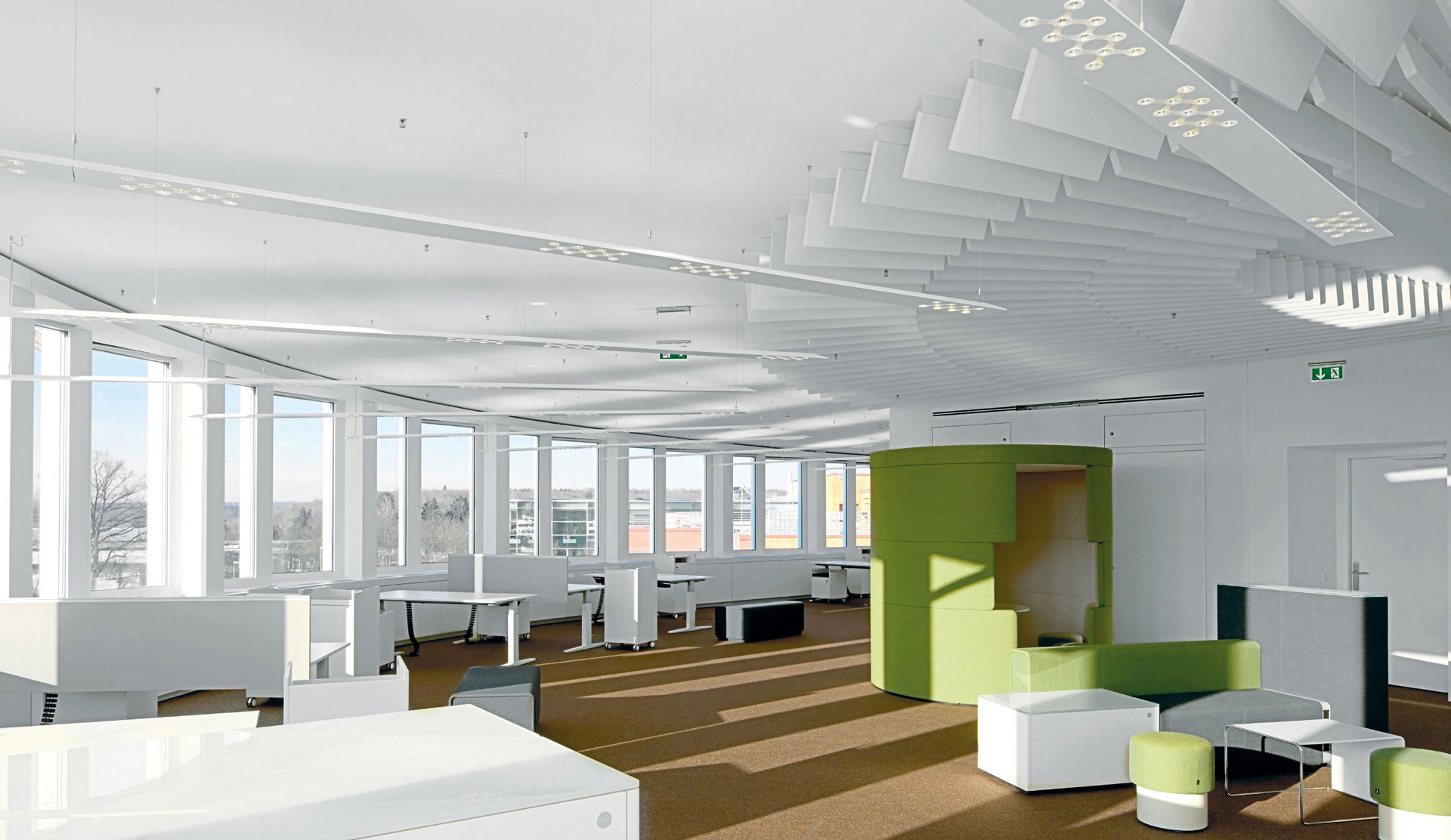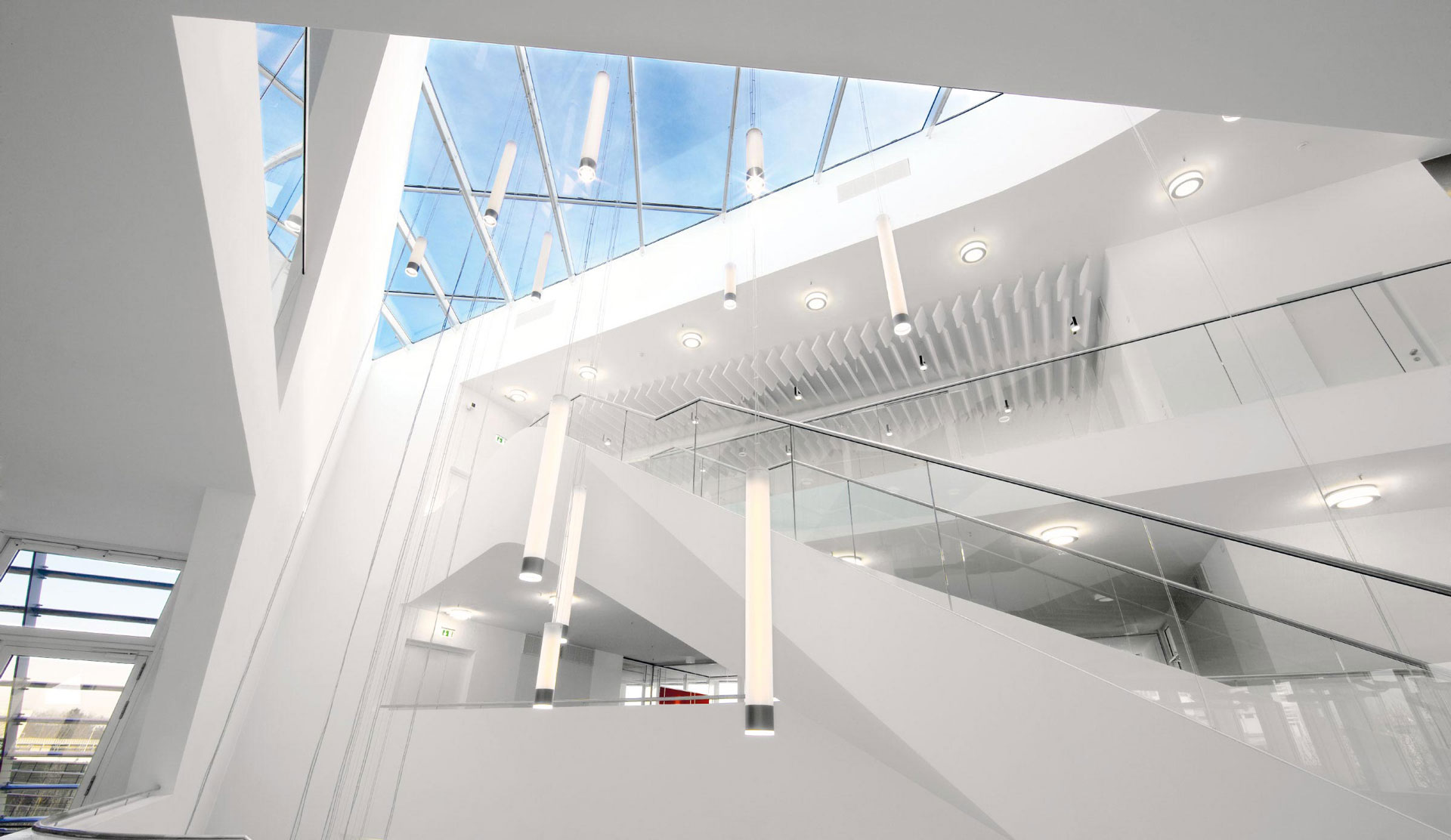"Haus der Wissensarbeit" - Fraunhofer Institute - Stuttgart, Germany
Fraunhofer Institute
It unites the objectives of cutting-edge international research with a visionary architectural concept. Working in close and sustained collaboration with the “makers of the future” at the Fraunhofer Institute, the Dutch architects from UN Studio, who previously designed Stuttgart’s Benz Museum (which has since received several awards), has now created an avant-garde milestone in office architecture.
A place where one can see and indeed experience the future today. Already a landmark from the outside: Amorphous with a gleaming white metal façade, the symbolic head-end building towers up into the sky at the south-west end of the campus – the building really does look like it has grown up from the soil beneath it. None of one side is identical to another; the jagged strips of windows circumvent the building and cut through the homogenous hulk, expanding and contracting in flowing movements.
At the point where the strips begin, a striking bell-like indentation points the way into the new building and adjoining existing structure. Architect Ben van Berkel counters the austerity and order of conventional office architecture with an organic and vibrant
design vocabulary that signalizes even from afar: everything here is in flux, be it the architecture, what goes on inside or the thoughts of the scientists. This avant-garde architecture is the outcome of a revolutionary planning process in which the entire building was designed and developed three-dimensionally.
But the design is not only impressive in its form; it also addresses in an exemplary manner the most urgent questions of our time and takes on a pioneering role as regards environmental protection. Within 32,000 square meters of floor space divided over five stories the researchers work in one of Germany’s most sustainable buildings. Certified according to the criteria of the U.S Green Building Council (LEED certificate) and the German Sustainable Building Council, the “Haus der Wissensarbeit” was one of the first buildings in Germany to receive the Gold certificate.
A decisive factor in their decision was the perfectly coordinated interplay of a system for geothermal energy production, intelligent façade regulation, holistic building automation and a lighting concept designed to be particularly energy efficient.



The planners at RSL and TRILUX developed a lighting concept for this sculpturally designed architectural focal point, permitting an individual solution that can be adapted to suit the location.
In response to the varying heights and lighting situations within the atrium, TRILUX took a leaf out of nature’s book: In the same way that a swarm adapts effectively and immediately to a complex and constantly changing environment, the light intensity and number of luminaires in use is increased or decreased as required.
In this specific spatial configuration, this concept makes for an emotional lighting ambience that emphasizes the architecture and contrasts starkly with the rigid grid pattern conventional to office buildings. What we see as an iconographic design concept at night is transformed into constructed reality by day.
As soon as you enter the building it becomes clear that everything follows the principle of communication. It serves as a catalyst for scientific work and is – as Ben van Berkel puts it – “the key to new and creative approaches to work.”
No barriers, no anteroom prevents visitors from getting close to the world of science. On entering you find yourself right in the heart of the building. A cathedral to research.
Your gaze automatically travels upwards; fascinated your eyes follow the stairs, expressive in their design, connecting the individual levels through the air in the atrium. New approaches and ways of thinking have gained acceptance, individual and carefully tailored solutions replacing austere-looking grid luminaires and inflexible lighting systems.
For example, they came to the agreement not to light up the building from outside at night. This decision was not only prompted by the obvious waste of resources, though this alone would have been reason enough, but more by the idea that a building can interact and communicate with its surroundings, even at nighttime.
It glows from the inside, rendering the workflows and applications inside legible and lending the building an even stronger sculptural character and depth without being reliant on the impact of sunlight.

Project information
- Developer
Fraunhofer Gesellschaft, Munich - Architect
UN Studio, Amsterdam / ASPLAN, Kaiserslautern - Location
Stuttgart, Germany